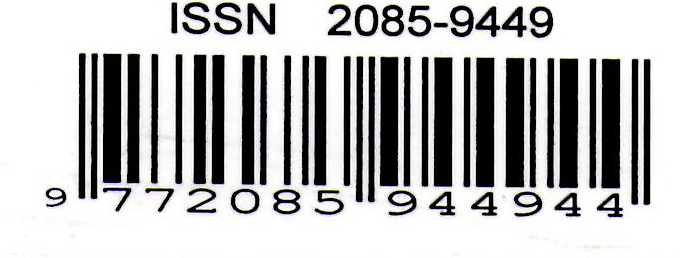ANALISIS KOMPOSISI DAN STRUKTUR TEGAKAN HUTAN MANGROVE DI WILAYAH PESISIR SUNGAI BENDERA KOTA SANGATTA KABUPATEN KUTAI TIMUR
Abstract
The Composition Analysis and Stands Structure of Mangrove Forest in Sungai Bendera, Sangatta City, Kutai Timur Regency. The purpose of this study was to determine the composition of vegetation and the diversity of species of mangrove found on the coast of the Sungai Bendera in Sangatta city. Data mangrove on vegetation was taken from each transect using the line transect sampling plot in the form of a square plot measuring 10 x 10 m (tree category), 5 x 5m (trunk category), 1 x 1 (seedling category). Based on primary data, 12 species of mangrove stands were found. Data analysis results for level values. The highest density, frequency and INP value compared to other types of mangroves at the level of seedling trees are Bruguiera parviflora, Bruguiera cylindrica and Osbornia octodanta. Domination has the highest level of trees (Bruguiera cylindrica 59.92%), saplings (Bruguiera parviflora 83.66%), seedlings (Bruguiera parviflora 76.6%). Based on the results of the tree diversity index of 1.91, stake 1.73, and seedlings of 1.70, based on Shannon Wienner (H') parameters on the succession or stability level of a community for tree, sapling and seedling levels in coastal areas the flag is in the category of moderate abundance (normal distribution) with criteria for community diversity (H') 1-3. Environmental parameters at the study site have sandy clay and clay sand substrate according to Bengen's statement (2004) stating that mangroves can grow well on muddy substrate (soil) and can tolerate sandy mud soils, especially those of high Bruguiera type. With temperatures ranging from 28 - 30 ° C, the average salinity between 25 - 29‰ In this range is still within the tolerance limit for mangrove growth, according to Mac Nae's statement (1968), Bruguiera types generally grow in areas with salinity between 25-28 ‰.
References
Bengen, D G. 2002. Sinopsis Ekosistem dan Sumberdaya Pesisir dan Laut serta Prinsip Pengelolaannya. Cetakan Kedua. Bogor: Pusat Kajian Sumber Daya Pesisir dan Lautan ,Institut Pertanian Bogor.
Chandra, I.A., G. Seca, dan A.M.K. Hena, 2011. Aboveground Biomass Production of Rhizophora apiculata Blume in Sarawak Mangrove Forest. Agricultural and Biological Sciences, 6 (4), 469-474.
Noor, Y. Rusila. 2006. Panduan Pengenalan Mangrove di Indonesia. Wetlands International Indonesia Programme.
Gopal, B. dan Bhardwaj, N. 1979. Element of Ecology. Departement of Botany. Rajasthan University Jaipur, India.
Indriyanto, 2006. Ekologi Hutan. Jakarta: PT. Bumi Aksara.
Indriyanto, 2006. Pengantar Budidaya Hutan. Jakarta: PT. Bumi Aksara.
Alimuddin. 2010. Komposisi dan Struktur Vegetasi Hutan Produksi Terbatas di Kabupaten Kolaka Provinsi Sulawesi Tenggara. Jurnal Agriplus, 20 (02) : 6-11.
Nasution SR 2005. Perbedaan Struktur dan Komposisi Hutan Mangrove di Kawasan Muara Sungai Mesjid Kota Administratif Dumai. Skripsi. Fakultas Perikanan dan Ilmu Kelautan Universitas Riau. Pekanbaru.
Heriyanto, NM. 2004. Suksesi Hutan Bekas Tambahan Dikelompok Hutan Sungai Lekawai-Sungai Jengonoi, Kabupaten Sintang Kalimantan Barat. Jurnal Penelitian Hutan dan Konservasi Alam. 1 (2): 5-11.
Irwanto. 2006. Keanekaragaman Fauna Pada Habitat Mangrove. Yogyakarta. Mangrove di Indonesia. PHKA/WI-IP, Bogor.
Bengen, D.G., 2004. Mengenal dan Memelihara Mangrove. Pusat Kajian Sumber Daya Pesisir dan Lautan IPB, Bogor.
Odum, E. HLM. 1993. Dasar-Dasar Ekologi. Terjemahan oleh Tjahjono Samingan dari Buku Fundamentals of Ecology. Yogyakarta. Gadjah Mada Universitas.
Refbacks
- There are currently no refbacks.
Copyright (c) 2020 JURNAL AQUARINE
Jurnal Aquarine (JAQ) / ISSN : 2085-9449
Organized by - Mulawarman University
Email : jurnal.aquarine@gmail.com

Jurnal Aquarine (JAQ)is licensed under a Creative Commons Attribution-ShareAlike 4.0 International License.





